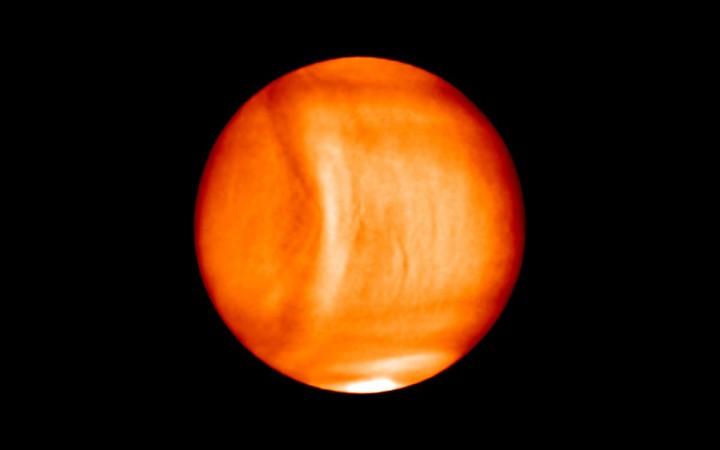
JAXA's Akatsuki orbiter spotted an extraordinary atmospheric feature in the Venusian atmosphere. It was a bow-shaped gravity 'patch' rippling through the clouds in the planet's upper atmosphere.
Also Read: Mysterious pillars of light spotted in Canada's night sky [VIDEO]
This bow-shaped patch is stagnant and is not considered to be a new phenomenon on Venus, just seen for the first time. It spreads over 10,000 kilometres (6,200 miles).
Researchers from Rikkyo University, Tokyo analysed this bow-shaped gravitational 'patch' after it was first seen in December, 2015.
"Here we report the detection of an inter-hemispheric bow-shaped structure stretching 10,000 km across at the cloud-top level of Venus in middle infrared and ultraviolet images from the Japanese orbiter Akatsuki," the lead author of the study, Makoto Taguchi, of Tokyo's Rikkyo University said in a statement.
"The bow is a pair of high and low temperature regions, of which amplitude is about 5km, extending from the northern high latitudes across the equator to the southern high latitudes with an end-to-end length of 10,000 km or longer," Taguchi stated.
The atmosphere of Venus comprises dense sulphuric clouds and rotates much faster than the planet itself, a phenomenon discovered in the 1960s, and known as 'super-rotation'.
The bow-shaped 'patch', however seems to remain constant, unperturbed by the swiftly rotating atmosphere.
"The most surprising feature of the bow is that it stayed at almost same geographical position despite the background atmospheric super-rotation, the uniform westward wind of which the maximum speed is 100 metres/second at the cloud-top altitudes,' Taguchi explained.
This giant, motionless patch may have originated due to teh gravitational pull of the mountains below the dense atmosphere.
"Numerical simulations provide preliminary support for this interpretation, but the formation and propagation of a mountain gravity wave remain difficult to reconcile with assumed near-surface conditions on Venus. We suggest that winds in the deep atmosphere may be spatially or temporally more variable than previously thought," the newly published study in nature.com stated.















